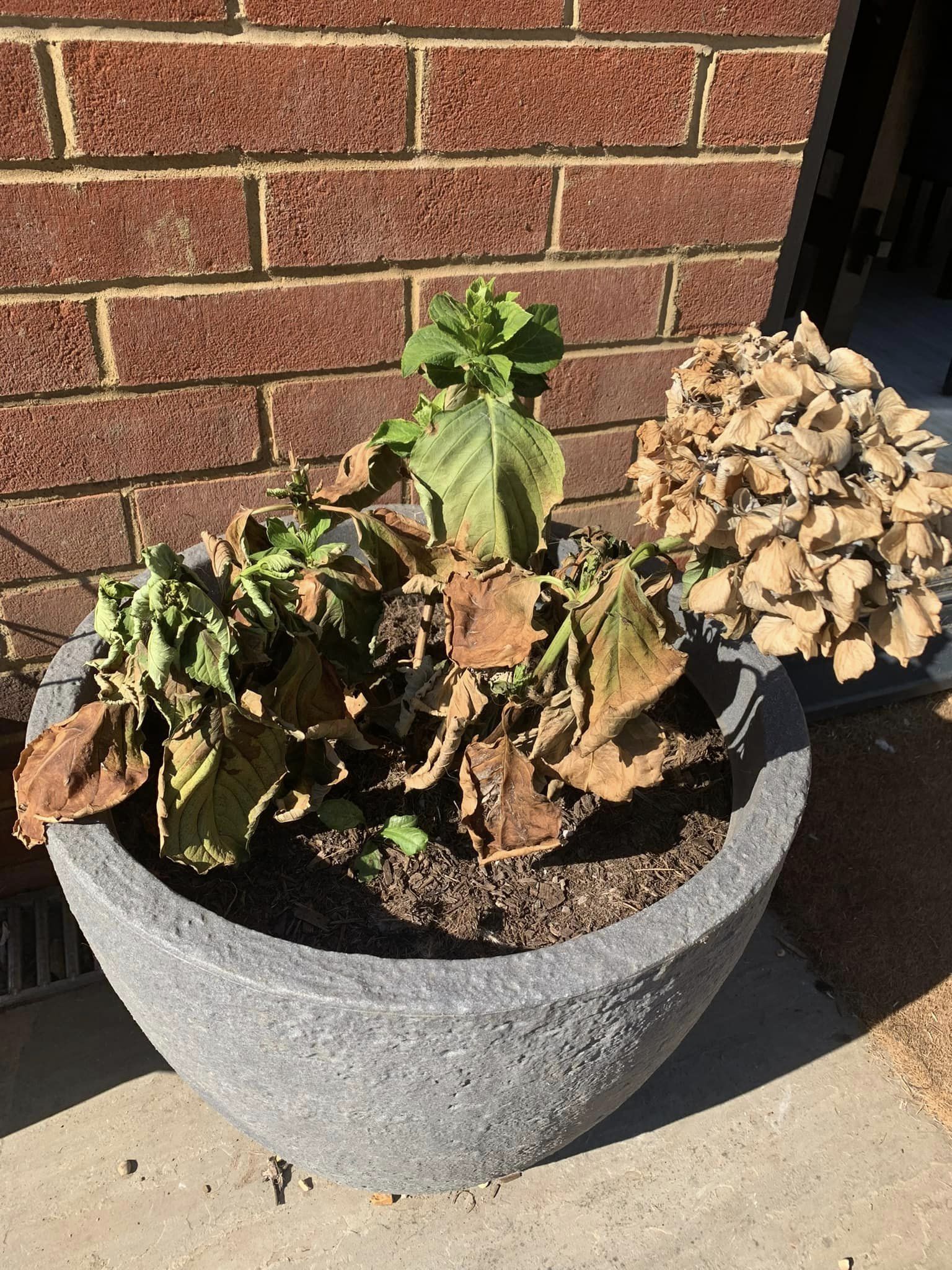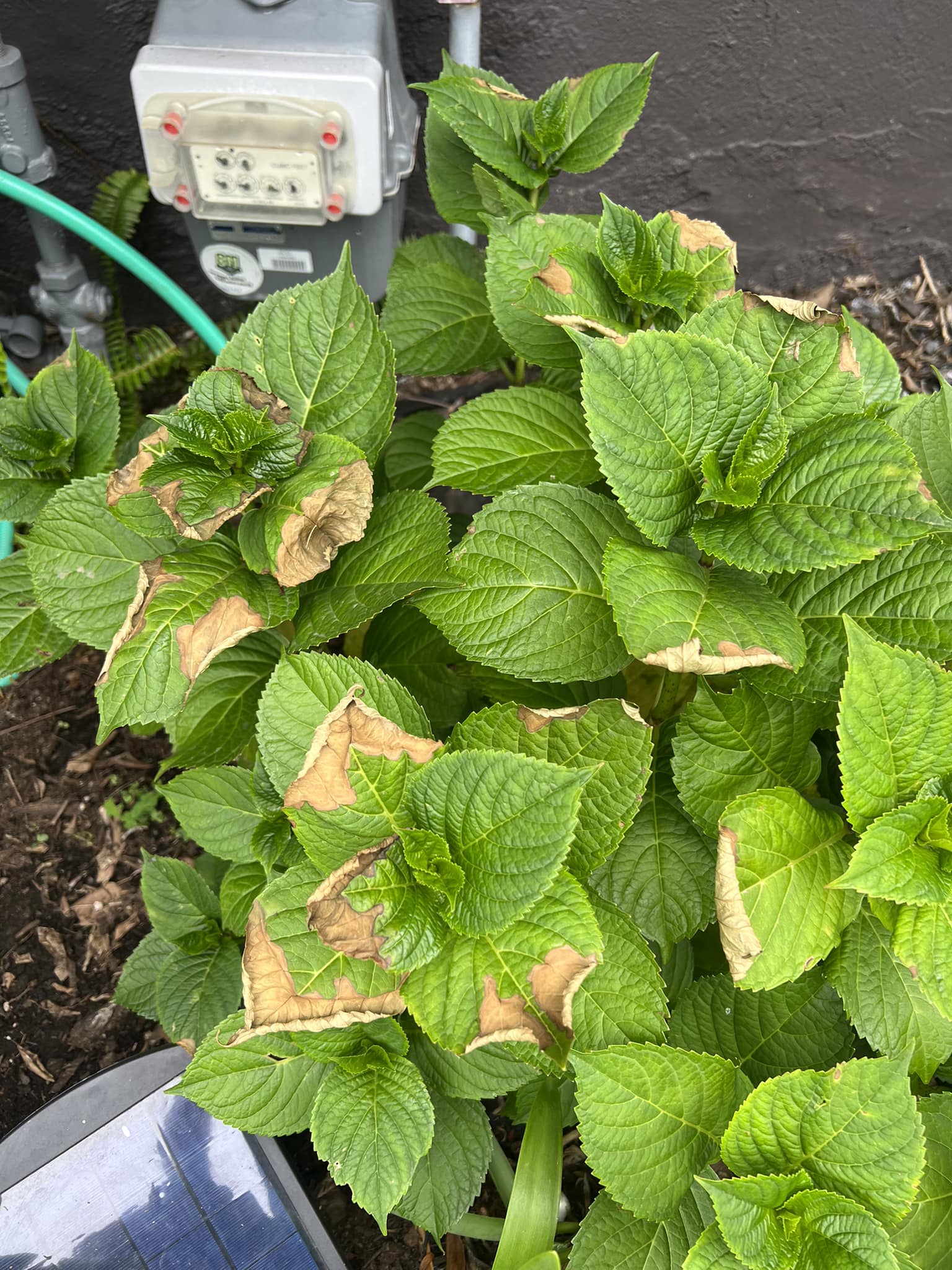Hydrangea leaves curling and turning brown hint at serious issues that can even make you lose your plant if these symptoms persist.
However, browning and leaf curl may also occur naturally after the growing season ends as the plant lose old foliage to bear new leaves.
So, read this article entirely to know the actual causes behind your Hydrangea leaf curl and turning brown with proper treatments and preventive measures.
Table of Contents Show
Why Are My Hydrangea Leaves Curling And Turning Brown?
It’s natural for Hydrangea to turn brown and curl its leaves due to transplant shock after you move it from one place to another.
The plant will revive and gain back its original color. But for the leaves turning brown with curling due to other reasons, you must cut off brown Hydrangea leaves.
1. Improper Watering
The watering issue is the major cause behind the leaves curling and turning brown in Hydrangea, as low water causes dehydration.
Moreover, when the available water is less than enough, there is a minimal water supply to the plant parts causing leaves curling and turning brown.

Besides, overwatering may also be the culprit, and the leaves of overwatered Hydrangea look floppy, curling, and brown.
Sometimes, even if you water properly, Hydrangea leaves may curl and turn brown due to improper drainage and bad water quality.
Treatment & Preventive Measures
- Water your Hydrangeas daily during the growing season.
- Ensure to water only when the top 2 inches of the soil becomes dry.
- Only use distilled or filtered water and avoid tap water that contains chemicals like chlorine, fluorine, etc.
- Use the bottom watering method if the plant is severely underwatered.
- Get a moisture meter to water your Hydrangeas properly.
2. Sunlight Issues
Almost all Hydrangea varieties don’t like too hot sunlight and love to thrive in partial shade or dappled sunlight.
Usually, Hydrangea needs six hours of sunlight daily, and too long sun exposure may cause leaves to turn yellow with gradual browning and curling.
Excessive sunlight may also cause the foliage to burn and dehydration, which is the major reason behind the browning.
Thus, brown, curled, and crispy leaves are due to the sun scorching of the foliage resulting from extreme sunlight.
Treatment & Preventive Measures
- Plant your Hydrangeas in the location with partial shade.
- If potted, move the plant to a place with low sun exposure or on the east-facing window.
- Use sheer curtains if the intense sunlight passes from the window.
- If you place the plant in an area with inadequate sunlight, provide at least 16 hours of artificial light.
3. Inappropriate Temperature
Hydrangea is an easy-growing plant that is hardy in the USDA zones 3-8. Cultivars like Limelight Hydrangea can even handle the heat of Zone 9.
But, in extreme temperatures, the plant may dehydrate itself, and the leaves stop functioning properly.
Basically, Hydrangea grows perfectly in temperatures of 50-60°F and up to 45°F in the early spring and winter.
Furthermore, leaves may face browning and curling in cold weather due to excessive frosty nights.
So, leaves turning brown with curling in Hydrangea may be due to burnt foliage caused by the excessive temperature.
Treatment & Preventive Measures
- Move the plant to an area with moderate temperature.
- Mist your Hydrangea to regulate the temperature.
- Keep Hydrangea away from cold drafts, heating vents, etc.
- Apply a mulch layer around the plant’s base and moisten the root zone.
- Use frost blankets to Hydrangea from chilling nights in winter.
4. Wrong Soil
If your Hydrangea growing in an area with poor soil conditions, it may still develop curling brown leaves.
Moreover, its surviving capacity in clay soil makes it hard in any soil type in your garden.
However, considerable compact or waterlogged soil is the enemy of this Hydrangea, causing several diseases and the leaves turning reddish brown.
If the condition persists, your Hydrangea may be unable to survive and eventually die due to poor soil conditions.
Treatment & Preventive Measures
- Plant Hydrangea in the area with well-draining soil with organic matter.
- Mix perlite if the soil is very compact and heavy.
- Grow Hydrangea in moisture control potting mix.
- If the soil is very soggy, flush the Hydrangea roots and transplant them into the new potting mix.
5. Incorrect Fertilization
Fertilization enhances the lush foliage and beautiful blooms during the growing seasons.
Also, when you apply excessive fertilizers, the leaves start turning brown and face curling issues after some time.

Also, under fertilization deprives the plant of nutrients turning the foliage brown with wilted or curled leaves.
Moreover, the leaf may also develop brown spots when you apply the liquid fertilizer on the plant’s foliage.
Treatment & Preventive Measures
- Feed Hydrangea with balanced NPK fertilizer once a month during growing seasons.
- Amend the soil with organic compost or homemade compost for better results.
- Make sure the soil is free of unwanted chemicals.
- Supply the plant with food from the base instead of pouring liquid fertilizer all over the plant.
- Hydrate the plant well before feeding it.
6. Pest And Diseases
Besides other problems, Hydrangea is susceptible to several diseases causing fungal and bacterial pathogens.
These pathogens cause many diseases like leaf spots, leaf curls, browning, yellowing, wilting, root rot, etc.
These pests also leave nasty spots where pathogens can invade the plant easily and worsen the condition.
Thus, brown spots and leaf curls may be due to those pathogens and pests. If brown spots occur on the plant, it spreads and covers the whole plant.
Treatment & Preventive Measures
- Isolate the diseased plant to avoid spreading pathogens to other plants.
- Discard the damaged parts for the safety of other parts.
- Throw away the heavily infected parts.
- If the potting soil is waterlogged, replace it with new potting soil.
- Apply pesticides and fungicides or switch towards neem oil once a week for safer options.
From Editorial Team
Hydrangea May Turn Brown And Face Leaf Curl During Windy Days!
During breezy days, the wind sucks the plant’s moisture very quickly, making it dry, brown, and curled, losing the plant’s vigor.
So, ensure the location is safe from wind or plant Hydrangea surrounded by taller plants.


